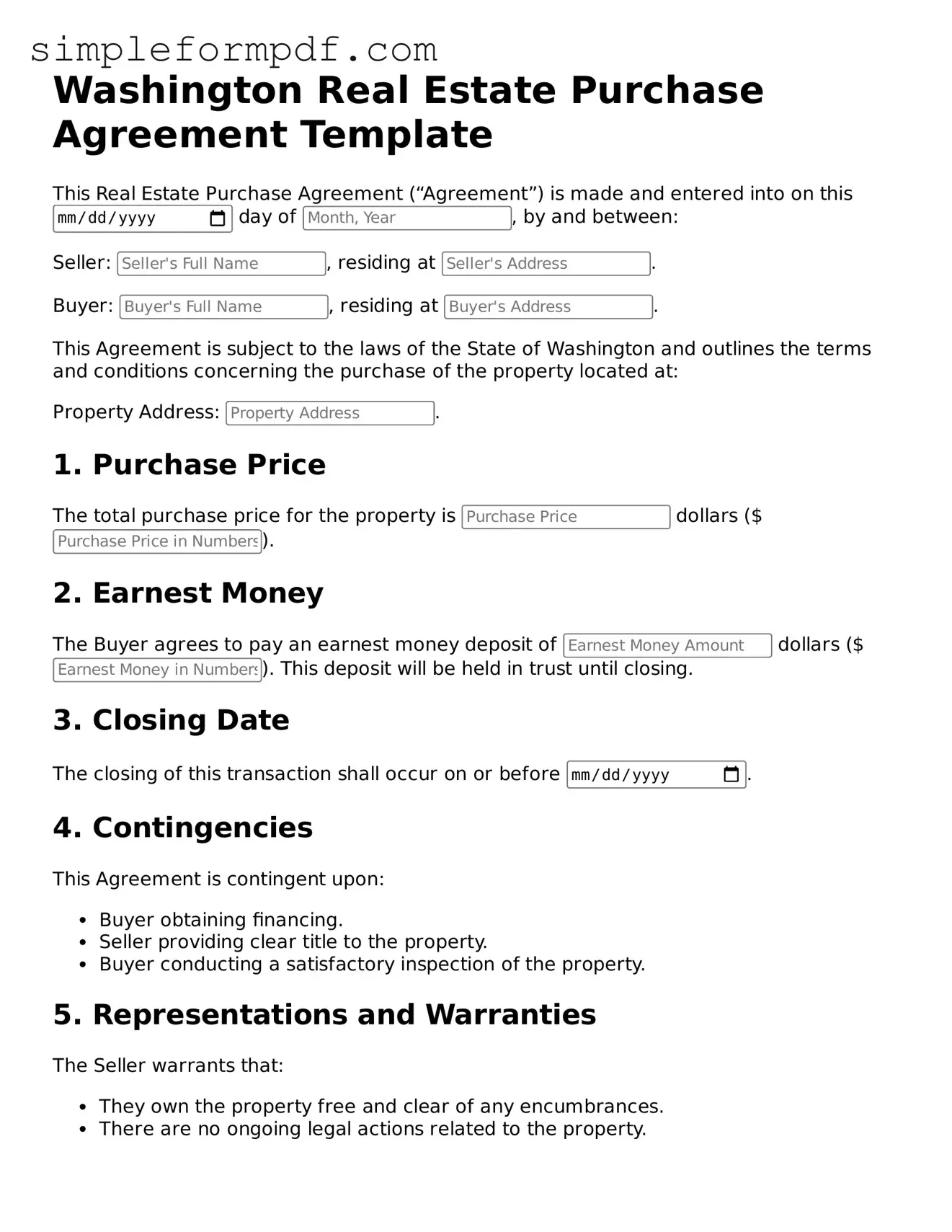Free Real Estate Purchase Agreement Form for the State of Washington
The Washington Real Estate Purchase Agreement form is a legal document that outlines the terms and conditions of a real estate transaction between a buyer and a seller. This form serves as a binding agreement, detailing essential elements such as the purchase price, property description, and closing date. Understanding this document is crucial for both parties to ensure a smooth transaction process.
To proceed with your real estate transaction, please fill out the form by clicking the button below.
Launch Editor
